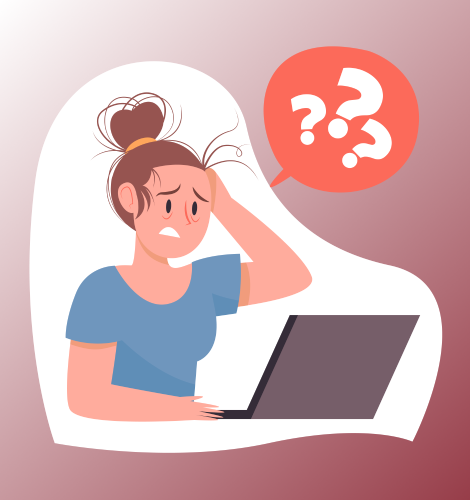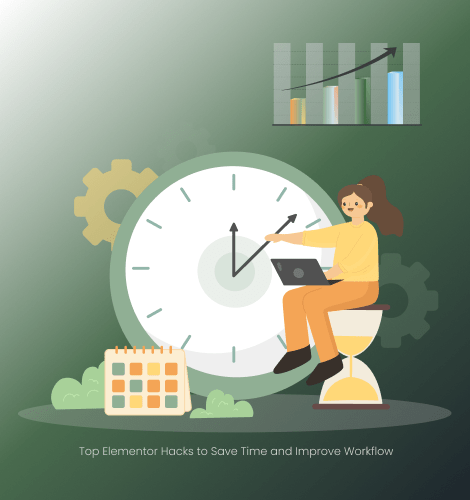Table of Contents

Elementor is a super handy tool, making website design a lot easier. Like any tool, you have to use it wisely to get the most out of it. Many users, especially those just starting out, make some pretty common mistakes that can mess up their site’s look, feel, or how well it works. Here are some biggest blunders to steer clear of when designing with Elementor:
1. Not Considered Mobile Responsiveness
One of the coolest things about Elementor is how it handles responsiveness. But many designers forget to check how their designs look on mobile and tablet devices. Ignoring this may lead to layouts that are weird, text that’s hard to read, and a disappointing experience for the users on smaller screens.
How to Avoid:
- Review device preview options to check the appearance on mobile and tablet.
- Adjust font sizes, padding, and margins for smaller screens.
2. Too Many Widgets and Features
Elementor has many widgets and features, but stuffing too many into your design makes your site look cluttered and slows it down.
How to Avoid:
- Keep it simple and user experience instead of going wild with fancy designs.
- Only use widgets that actually add some value to your content.
3. Ignoring Performance Optimization
Going wild with animations, using huge images, or having code that’s not optimized at all will really slow things down. Site speed is super important for users and SEO alike.
How to Avoid:
- Compress images before uploading.
- Reduce animations and resource-allocated objects.
- Utilize a cache plugin to load it quicker.
4. Failure to Implement Global Settings
Elementor has a function of enabling global options of typography and color settings of design aspects. However, many do not set global settings on the website, making their web page designs inconsistent with one another.
How to Avoid:
- Set your global font styles and color preferences from the onset of your development process.
- Use global widgets for elements you want to repeat, like buttons and headers.
5. Not Customizing Breakpoints
Elementor comes with default breakpoints for responsiveness, but if you don’t adjust them for your audience’s specific devices, you could end up with designs that just don’t work well.
How to Avoid:
- Look at your site analytics to see the most common screen sizes.
- Tweak those breakpoints to fit what your audience needs.
6. Neglecting Accessibility
Making your site accessible is really important so everyone, including folks with disabilities, can use it. A lot of designers don’t take important accessibility features like good contrast, ARIA labels, and alt text for images into account.
How to Avoid:
- Utilize Elementor’s accessibility options, such as focus rings and skip links.
- Make sure you have enough color contrast and add alt text to all your images.
7. Installing Too Many Add-ons
Add-ons can definitely take what Elementor can do to the next level, but too many of them can cause compatibility issues and slow your site down.
How to Avoid:
- Only install add-ons that you actually need and trust.
- Keep your plugins updated to avoid any conflicts.
8. Not Backing Up Before Big Changes
Making huge edits without backing up can lead to lost data or mess up your site’s functionality.
How to Avoid:
- Always create a backup of your site before diving into major changes or updates.
- Try using a staging environment to test things before going live.
9. Not Making the Most of Elementor’s Pro Features
Elementor Pro comes with awesome features like the Theme Builder and Popup Builder. Not using them effectively can cap your site’s potential.
How to Avoid:
- Spend some time getting to know how to use the advanced tools in Elementor Pro.
- Make customized headers, footers, and dynamic pages using Theme Builder.
10. Overlooking SEO
Building an elegant website is fabulous, but if you ignore SEO, you might be left in the dust by search engine rankings. Most designers fail to consider basic SEO principles, such as structured content using heading tags, meta tags, and image optimization.
How to Avoid:
- Use correct heading tags such as H1, H2, etc., to create your content.
- Add meta titles and descriptions to each page.
- Optimize images with descriptive file names and alt text
Conclusion
Elementor is a fantastic tool for WordPress development, but by not having these common mistakes, your designs will not only turn out attractive but also will be fast, user-friendly and usable. Use these tips and guidelines when you work on the project, and you’re bound to get an almost-perfect Elementor design.
If you need help with any of these tips or want to explore something specific, just let me know!



